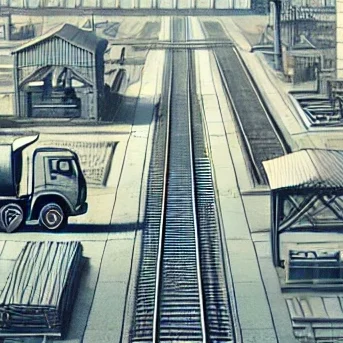
The steel industry is one of the biggest industries which has intensive linkage to industrialization and economic development throughout the world with important sectors like construction, automobile and infrastructure industries. In the past few decades, the competitiveness of the steel industry has shifted a notch higher whereby big companies have stretched their operations by acquisition and mergers. These acquisitions are not just about growing the manufacturing volume but also new technologies, new markets and important resources. The factors considered while estimating the value of steel companies have also changed over the years and reading the pressures have emerged as critical. It is felt that a major trend in the steel industry is consolidation, which occurs through mergers and acquisitions. Bigger food manufacturers are subsequently buying other small players to consolidate their market and this has made it easier for them to advance in economies of scale space. Many of these acquisitions require sophisticated business appraisal and this not only embraces tangible fixed assets like plant and machinery, materials, buildings, etc available with the target company, but also the economic value inherent in the ideas, customers, brand name and growth prospects of the target firm. The inclusion of these elements in compiled modern valuation models has turned into a necessity when evaluating the steel companies ‘fair value. Technological advancement emerges as the new value creating force in the steel operating environment. Firms that have incorporated smart technologies in production including Automation and Artificial intelligence are usually considered worth more because they can manufacture steel more efficiently, and at lower cost. Moreover, more attention has been paid to the companies using green technologies due to the higher demand for environmentally friendly production processes. These companies are also better placed to be ready to meet further regulatory advancements and gain environmentally aware investors adding to their values.
It is also important to look at market accessibility where steel firms rate high since they have a market reach around the globe. He also finds that the companies that have larger control in emergent market like India and china has higher valuation as these companies has higher growth potential in the emergent market. The growing steel consumption in infrastructure projects, construction and automotive industries in the fast-growing economies offers great opportunities for growth. Therefore, firms that have established themselves in these markets, through an acquisition strategy, are considered more valuable. Other factors, which are gradually coming to define the valuation of steel companies, also include environmental, social, and governance (ESG) factors. Consumers and shareholders are increasingly looking at how firms manage the environment, for instance, global warming, and depletion of natural resources. Those firms, which started practicing energy conservations and materials and wastes minimizations, are given better ratings by the market. This has led to a change in valuation techniques, whereby the efficiency of ESG dynamics underlies the assessment of the value of steel makers. In conclusion it is important to name that the current approaches to the valuation of steel companies are better suited to the realities of the current market compared to the approaches of the past. Strategic dynamics such as merger and acquisition activity, technology and market development or positioning, and ESG factors all also bear heavily on assessment of the fair value of such business. While the players in the steel industry are gradually making adjustments to respond exotic environmental changes, the same should be expected of the valuation models.
